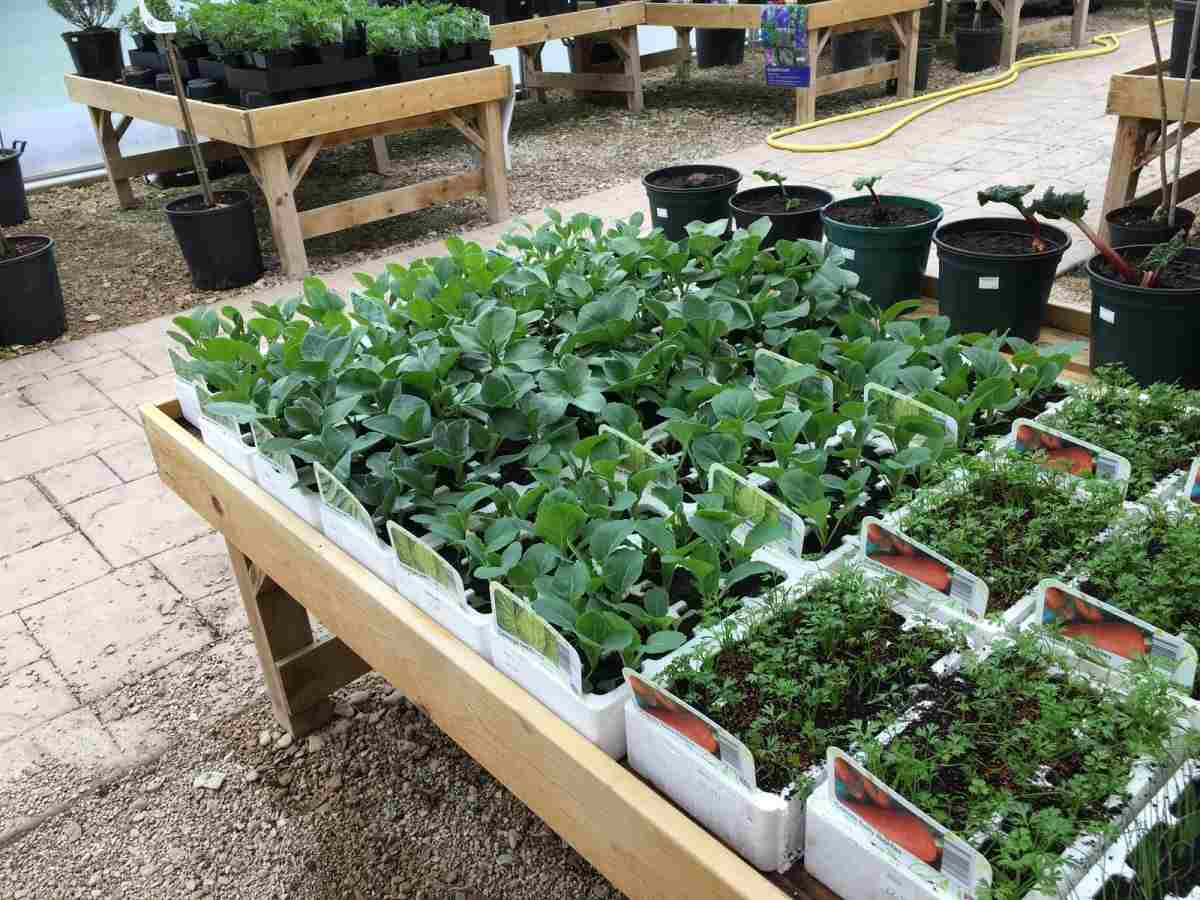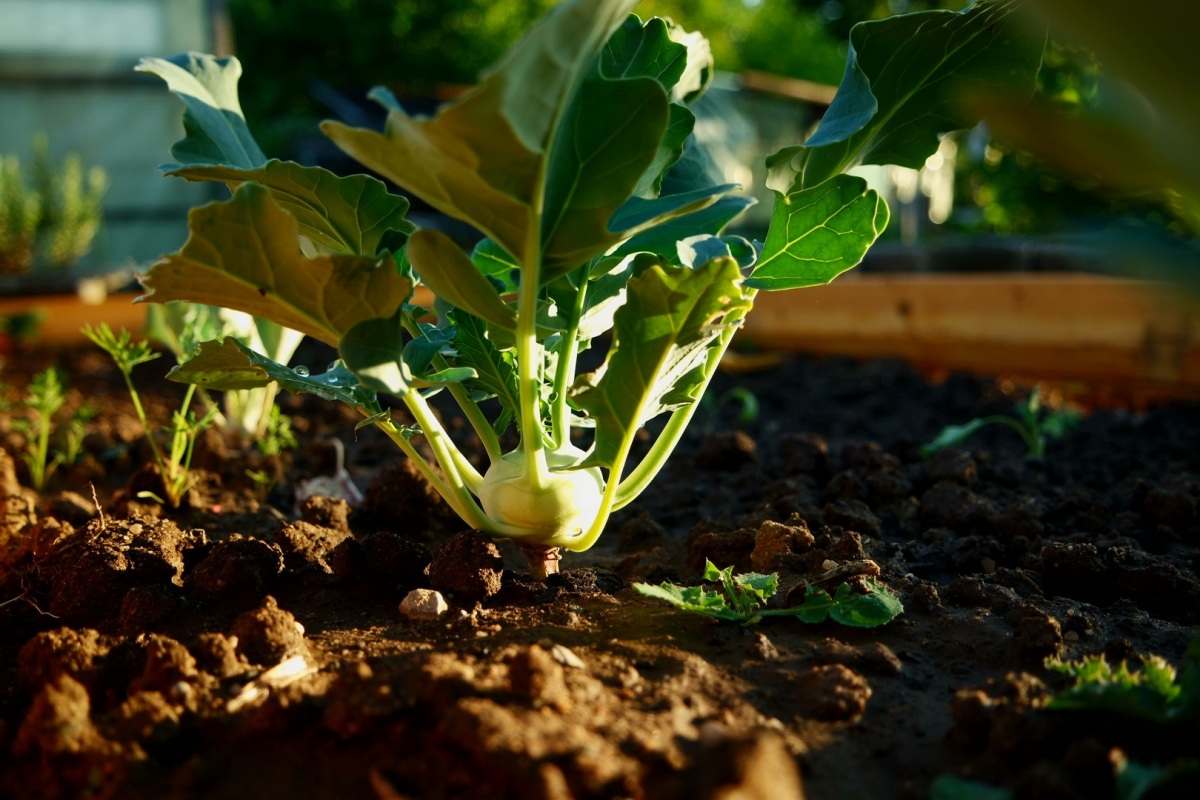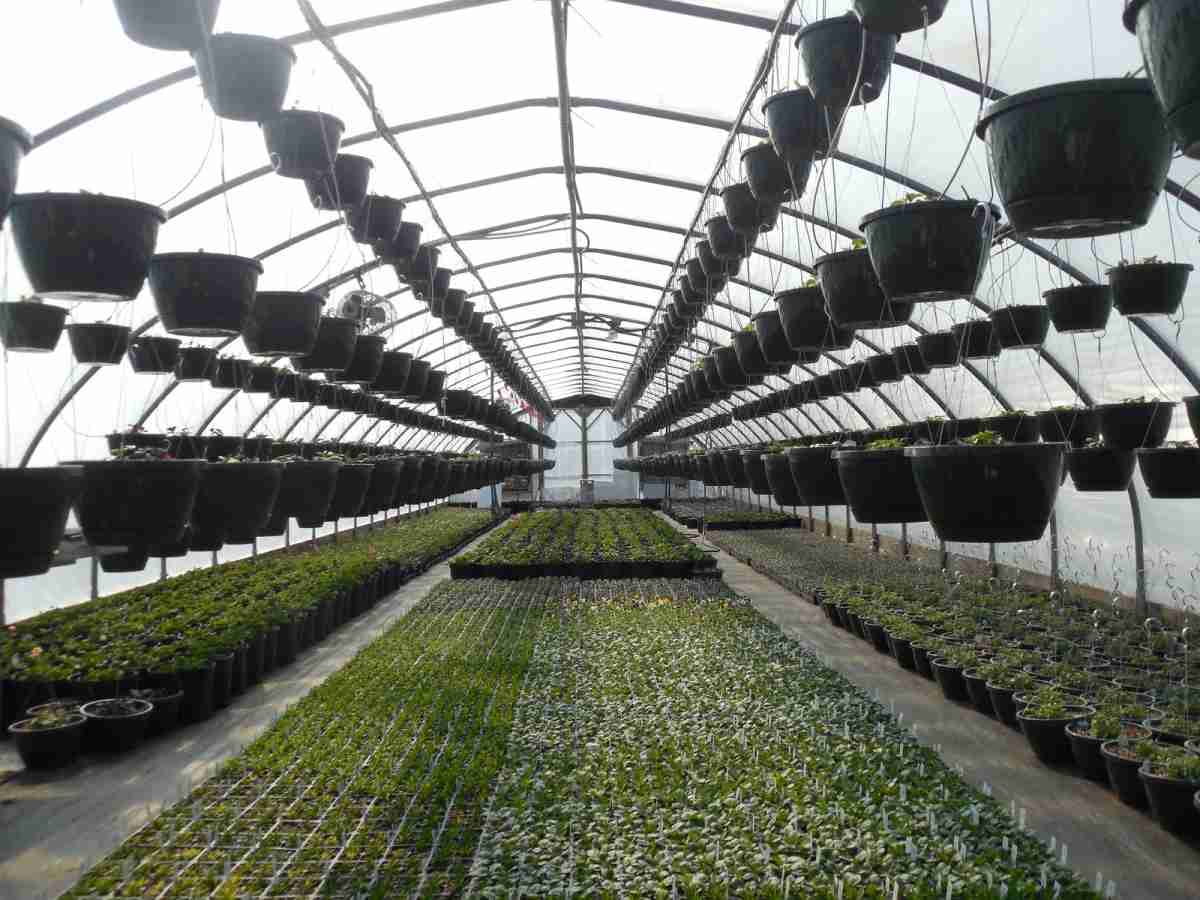Introduction to nursery management in vegetable crops
Why do we need a Nursery?
A vegetable nursery management is a place or an establishment for raising or handling of young vegetable crops plant seedlings until they are ready for more permanent planting. A vegetable nursery is a place where vegetable seedlings are grown before transplanting them in the main plots. Normally seed is to grow vegetables and to raise seedlings. Some vegetable plants cannot grow directly by sowing the seed into the plot. For example, for vegetable plants such as tomato, eggplant, Rayo, cabbage, and cauliflower, seedling first needs to be raised and then transplanted in the plot.
A step by step guide to vegetable crops nursery management
Vegetables such as Tomato, Brinjal, Chillies, Capsicum, Cauliflower, Cabbage, Knol-Khol (kohlrabi), Chinese cabbage, Onions, Tomatoes, Eggplant, Cabbage, Brussels sprouts, Sprouting broccoli, Endive, Chicory (red and green), Celery, and Kale are best vegetables raised in the nursery bed.

The nursery must be near the main garden to avoid damage to seedlings during transplanting. The water source should also be near for irrigation system. The nursery bed must be protected from strong winds and should never be located on a slope to avoid erosion of seeds and nutrients; it should face east-west direction and never be put in a waterlogged area.
The requirements and management of the vegetable nursery crops
Young plant whether propagated from seed or vegetative reproduction requires lots of care mainly during the early stages of growth. Then, they have to be protected from adverse temperatures, heavy rain, drought, wind, and varieties of pests and disease. If small seeds of vegetables are direct sown in the field, germination is poor and the young plant grows very slowly and requires lots of time to mature. Also, there can be limitations in terms of the available season for full development in the field. To overcome these problems, vegetable plants are grown in a nursery before being transplanted in the field.
Methods of growing vegetables in nursery management
1- Direct sowing (Through seed) – Okra, Peas, cucumber, Bitter gourd, Bottle gourd, Radish, Turnip, Spinach, Carrots, Mathey, and beetroots, etc.
2- Through seedlings – Onion, Tomato, Brinjal, Pepper, Chilies, Cauliflower, Cabbage, lettuce and salary, parsley, Artichoke, etc.
3- Vegetative propagation – Potato, Ginger, Turmeric, Mint, Sweet potato, Calocacia, and Garlic, etc.
Soil preparation for vegetable nursery management
The soil must be loam to sandy loam, loose and friable, rich in organic content, and well-drained for raising vegetable seedling the soil pH should be 7.0. Soil preparation needs deep cultivation of nursery land either by soil turning, plowing by spade, and subsequent 2 to 3 hoeing with a cultivator. Remove all the clods, stones, and weeds from the field and level the land. Mix 100 kg well rotten and fine FYM of about 500 gm vermicompost per square meter mixed in the soil.
Advantages of nursery management of vegetable crops
- It is possible to provide favorable growth conditions i.e. seed germination as well as growth
- Better care of younger plants as it is very easy to look after nursery in a small area against pathogenic infection, pests, and weeds.
- Crop grown by nursery rising is quite early and fetch a higher price in the market, and so economically more profitable.
- There is a saving of land and labor as the main fields will be occupied by the plants after 1 month. More intensive crop rotations can be followed.
- More time is obtainable for the preparation of the main field because the nursery is grown separately.
- As vegetable seeds are expensive particularly hybrids, so we can economize the seed by sowing them in the nursery.
- Nursery helps in making more efficient use of land and helps to reduce field management cost,
- It helps to improve crop uniformity in the field.
Site Selection for nursery management of vegetable crops
Site Selection is an important consideration for nursery management.
Critical points required to be considered while selecting nursery area for vegetable crops are;
- The area selected must be well-drained, and free from waterlogging
- There should be proper sunlight
- The nursery must be near the water supply so that irrigation can be easy
- The area must be well protected from pet and wild animals
Soil preparation for nursery management in vegetable crops
Soil Quality
- Raising of vegetable seedlings needs fertile and healthy soil.
- Preferably, the soil for nursery must be loam to sandy loam, loose, rich in organic matter, and well-drained.
- The soil pH level should be close to the neutral i.e. about 7.0
Soil preparation
- It needs deep cultivation of the nursery land either by soil turning plow or by spade and subsequent 2 to 3 hoeing with a cultivator.
- After that, all the clots, stones, and weeds from the field must be removed and land should be leveled.
- Mix 2 kg well rotten and fine Farmyard manure/compost or leaf compost and mix in the soil. If the soil is heavy mix 2 to 3 kg sand per square meter so that the seed emergence may not be hampered.
Critical points need to be considered while growing vegetables in nursery
In case if you miss this: Growing Tomatoes Organically, Cultivation Practices.

Purchase or select your vegetable seeds
Buy certified vegetable seeds from reputable seed companies. If you are using your seeds make sure you choose seeds with ideal and preferred qualities.
Carry out a seed germination test
To avoid seed wastage, conduct a seed germination test. A germination test will help you to know if the seed will germinate after sowing and how many will germinate. So, you will know how many you require for a nursery. This must be done a couple of days before you sow the seeds on your seedbeds.
Planting seeds
Seeds must be planted at a spacing of 15cm between rows, cover the seeds lightly and mulch the bed with dry grass. The bed has been watered thoroughly on the day before sowing and mulching a nursery bed soon after sowing seeds is a must.
Soil treatment
Soil solarization for about 4 to 5 weeks on the plowed soil covered with the plastic tunnel is better. Drenching of the soil 15-20 days earlier of sowing by 4 to 5 liter of water with a concentration of 1.5 to 2% of formalin solution per square meter and covered with the plastic sheet. Application of the fungicide such as Captan and Thiram which will also kill the pathogens 5-6 gm of any square meter nursery area. Furadon, Heptachlor are some insecticides that are mixed in the dry soil by 4-5 gm/m2 and should be mixed up to the depth of 15 to 20 cm for nursery preparation. Supply of the hot steam at least 4 hours continuously under the covered polythene sheet and allow the soil for the vegetable seedbed preparation.
Maintenance of nursery bed
Mulch the seedbed after sowing until seed germination. Provide enough shade to the crop after germination 1metre above the bed. Thin the crops properly, remove weak or diseased vegetable seedlings and keep the bed weed-free.
Transplanting
Transplant seedlings after 21 to 30 days. Harden the vegetable crop by removing the shade a day before transplanting as this gives the seedling chance to get used to the direct sun. Reduce water at this stage and transplant at recommended spacing per crop early in the morning or late in the evening time (from 6:00 am to 10:00 am or 4:00 to 6:00 pm) and then plants receive water as soon as transplanting is done.
Nursery bed preparation for vegetable plants
Nursery beds should be prepared according to the season and selection of crops. In the rainy season raised beds are prepared but in the winter and summer season flatbeds must be prepared. And, similarly onion in the Rabi season requires flatbeds. For the uniform and high percentage of seed germination, the soil must be fine and moist enough.
If the seedlings are to be raised in boxes during unfavorable weather conditions, the flower pots, polythene bags, potting plugs, wooden trays, and earthen pots, etc may be used. Prepare soil mixture in the ratio of about 1:1:1 of soil, sand, and well rotten FYM/leaf mold and fill the mixture in these seedlings raising structure.
Process of nursery bed preparation;
- Construct raised seedbeds of 1 meter wide where no eggplant, potato, or tomato has been grown for at least 3 years.
- Incorporate 5 kg/m2 of good compost into the bed and if possible solarize the planting bed to kill diseases.
- Form shallow furrows with a stick. For example, one hectare of tomato will require 150 to 200 g of good seed.
- Sow a seed and then cover lightly with soil.
- Pat firmly with a rake, mulch and then water.
- Do not use fresh manure on a seedbed as it burns seedlings and after seedlings emerge push mulch off the seedlines to allow sunlight.
- Young seedlings need sufficient water. One week before transplanting, reduce water to harden seedlings.
- Tomato seedlings will be ready with 3 to 5 true leaves or 15-25 cm high. Onion seedlings are ready to transplant with 3 to 5 well-formed leaves. Transplant on a cloudy day or in the late afternoon.
Prepare your seedbed and sow vegetable seeds in nursery
Make seedbeds 1.0m – 1.2m wide x 2m or longer. This standard size makes it easy and then convenient to work around the seedbed. Water the seedbeds, and cover with 4cm thick dry grass, sawdust or rice straw. Leave for 2 to 3 days to reactivate spores of disease pathogens then burn to sterilize the soil. You may also cover seedbed with transparent plastic sheets for 5 to 8 weeks to sterilize the soil.
Now sow your seeds;
- Before you sow, treat seeds with recommended seed dressing or hot water before planting.
- Drill thinly in rows about 10cm apart and cover with a thin layer of soil.
- For seed-trays sow 1 seed per cell and cover with newsprint.
- Cover bed with dry grass (non-seeded), transplant plastic sheets, and water.
- Seeds emerge within 5 to 7 days.
Sowing of vegetable seeds in the nursery
After the seedbed is prepared then the vegetable seed is sown in the nursery bed differently. Those methods are as follows;
Broadcast methods
Seeds are broadcasted in the prepared nursery bed and later on, the seeds are covered with well rotten fine sieved and then treated FYM or compost. The major disadvantage of the Broadcast method is there is an uneven distribution of seeds in the nursery that becomes dense but this method is commonly used and practiced.
Line sowing
Line sowing is the best method of seed sowing in the nursery. Lines are made 0.5 to 1 cm deep parallel to the width at the distance of 5 cm from the line. The seeds are sown or placed singly at the distance of about 1cm apart. Cover the seeds with the fine mixture of soil, sand, and FYM in the ratio of about 1:1:1. After covering light irrigation should be given with the fine rose can.
Planning and scheduling of vegetable nursery activities
You may also check this: Protected Cultivation of Vegetables, Flowers, and Fruits.

The successful establishment of quality seedling and propagules depends upon the proper planning and timely execution of nursery activities. Preparation of species-level nursery activity calendar will facilitate the vegetable seedling production.
Below are the important points to be remembered for the planning of nursery activity.
- The mature pod has to be collected just before it falls and subsequently seed should be extracted without damage to the seeds
- Sowing of seed/propagules must be carried out during early morning (7 to 9 am) or evening (3 to 5 pm) hours
- Transplanting, watering, weeding and shifting operations in the nursery needs to be done at a fixed interval
- Hardening of vegetative propagules and dispatch of grown-up seedlings must be in proper time
- Engaging only the skilled and trained labor in nursery activities to assure the success
- Water storage for lean available period, mother plant maintenance for seasonal collection of material is important resource management activities
- Timely availability of nursery inputs such as soil, sand, Farm Yard Manure, bio-fertilizer, chemicals, water, etc and their collection in cheap cost period can reduce the production of seedling cost
- Each plant species has its season of establishment and therefore, sowing, transplanting, and distribution of each species should be scheduled accordingly
Raised nursery beds management for vegetable crops
- The length of the bed can be kept 3 to 5 meters; however, width is restricted to 1 meter which facilitates intercultural operations.
- The beds are raised about 15 to 20 cm high from the ground level. A space of 30 to 40 cm is left in between two beds.
- The space between 2 beds helps in weeding, nursery care against diseases and insect pests, and also for draining out the excess rainwater from the nursery beds.
- The number of beds mainly depends on the particular crop, season, and growing area of crop.
- The beds must be prepared in the east and west direction and the line should be made from north to south direction on the beds.
Watering system for vegetable nursery beds
The nursery beds need light irrigation with the help of rose can till the seeds get germinated.
Excess rainwater or irrigated water must be drained out from the field as and when it is required otherwise plants may die due to excess of water.
Watering in the beds mainly depends upon the weather condition. If the temperature level is high, open irrigation is applied. Need not to irrigate the seedbeds during rainy days.
Weed control and plant protection in nursery management of vegetable crops
Timely weeding in the nursery is important to get the healthy seedling therefore manually removing them or pre-emergence herbicides such as stomp by 3ml per liter water must be sprayed on the nursery bed after the seed sowing and seed covering with the mixture.
Damping-off of seedling, light blight disease, and leaf minor and the borer infect the seedling in the nursery. The plant care for controlling them in time is essential.
Nursery disease and their management in vegetable crops
The seedling stress symptoms such as damping off, wilt, root rot, rust, and powdery mildew are caused by pathogen infection and result in stunted growth of seedlings.
These pathogens can be soil, seed, or airborne. Nurseries established in the recently cleaned land hardly invite parasitic organisms and stunted growth of seedlings indicates the loss of soil fertility, excess watering, and dumping of seedlings in shady areas.
As a preventive measure sterilization of nursery mixture, pre-treatment of vegetable seeds with a fungicide such as Captan can control the disease. If the disease occurs, the casual pathogen can be identified by expression of symptoms and accordingly fungicide may be applied.
Integrated disease management in nursery vegetable crops
- Selection of apparently healthy vegetable seeds/propagules for seedling production
- Seed dressing with 0.2% Carbendazim/Methyl thiophanate/Benomyl/Thiram
- Sowing in sterilized/fumigated, clean beds and adequate watering
- Using a sterilized budding knife, and scissors during budding
- Transplanting seedling after root dip for 3 to 5 min in 0.02% Carbendazim solution
- Healthy planting material maintenance by keeping them under proper sunlight, watering and clean environment
- Frequent examination of vegetable seedling health and removal of diseased stocks
- Foliar spray of about 0.2% Carbendazim/Dithane M-45 at regular interval
Pest management in nursery vegetable crops
A major injury to nursery stock is caused by several groups of insects. These insect pests have been divided into three categories that are major nursery pests (white grubs, cutworms, termites and crickets), minor nursery pests (defoliators, sapsuckers, grasshoppers) and non-insect pests (nematodes and vertebrate pests). Generally, the damage caused by the insects can be controlled by maintaining better sanitation of the nursery area, adoption of suitable cultural practices, and need-based application of chemical and biological pesticides.
In case if you are interested in this: Plant Nursery Business Plan, Cost, License, Permit.
Ohhh i love your materials you share here
I do follow up your writings. My worry lies when i cant have access to your content since its protected. I am one of a few farmers in my locality who have access to electricity talk less of internet. I pray and wish if you can send me mails in pdf format or better still provide an option whereby others can use your enriching materials to vulgarize this notable agricultural sector.
Thanks for understanding